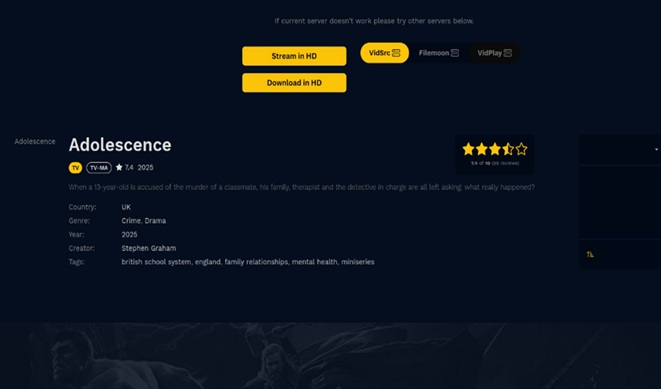The new Netflix series Adolescence quickly sparked a wave of conversations about teenage mental health and digital safety. The chilling four-part narrative follows a 13-year-old boy who, after months of cyberbullying and immersion in toxic online communities, comes under investigation for allegedly murdering a schoolmate. The narrative delves into themes such as youth violence, bullying, and the influence of social media on young people. In light of the questions raised by Adolescence, Kaspersky explores how parents can support and protect children and teens online — not only by controlling access, but by rebuilding trust and digital literacy.
According to Kaspersky’s research, half (50%) of children in South Africa receive their first personal device – a smartphone or tablet – quite early, at the age of 3-7 years. This early exposure is not inherently negative: digital tools can support learning, creativity, and social connection. However, what’s often missing is a structured introduction to the online world — one that matches a child’s emotional and cognitive development, because knowing how to use a device isn’t the same as knowing how to use it safely. Children are exposed to a vast, largely unfiltered digital ecosystem long before they are able to critically assess content, set boundaries, or understand the long-term implications of their online behavior. As a result, their first experiences online may include encounters with inappropriate content, aggressive behaviour from peers, or the pressures of social comparison.
Exposure to harmful or inappropriate content is one of the most common online risks for children — and one of the easiest to underestimate. However, a quarter of respondents in South Africa (26%) have not discussed Internet safety rules with their children, leaving dangerous gaps. A child watching innocent videos can, within a few clicks, be shown violent content or explicit materials. Without content filtering or visibility into what children are watching, parents may not realise how quickly the digital environment can shape thinking and behaviour.
Cyberbullying is one of the most visible digital threats faced by children and teenagers today and one of the hardest for parents to detect. Unlike traditional bullying, it doesn’t rely on physical presence. It takes place through devices and platforms that teens use every day, potentially making the abuse constant and inescapable. From impersonation via fake accounts to the distribution of humiliating screenshots, memes, or videos, cyberbullying can be coordinated, persistent, and often go unnoticed by adults — particularly when it happens in private chats, closed groups, or disappearing content formats like Stories.
When such harassment goes unresolved, it often drives teens further into digital isolation — not just from their peers, but also from their families. Searching for support or a sense of belonging, some turn to anonymous or niche online communities, where harmful ideas are normalised and vulnerability is easily exploited, as presented in the Adolescence series. Digital isolation and loneliness push the main character to become deeply involved in toxic online subcultures in niche forums. These environments can be difficult for adults to monitor, especially when teens actively hide their digital activity to avoid scrutiny.
To shift from digital isolation to digital dialogue, parents need to pay special attention to building a relationship where teens feel comfortable speaking up when something goes wrong online. From phishing links to suspicious messages, or unwanted contact to harmful content, early detection depends on whether a teen feels safe enough to say that something happened.
However, dialogue alone isn’t always enough — especially when parents don’t know what to look for. That’s where parental control apps can help. It supports parents with real-time insights, alerts about risky behaviour, and smart tools to help families stay informed — without crossing the line into digital surveillance. When combined with trust and open communication, it becomes a powerful way to stay connected to your child’s online world and intervene before risks escalate.
While the series itself delves into the variety of digital risks, its own popularity is also exploited by cybercriminals. Kaspersky researchers have identified phishing pages offering free downloads of Adolescence episodes, but instead of streaming content, these sites deliver malware. This is a clear reminder that teenagers’ interest in popular digital content can be weaponised against them, and parents need to make sure their children are aware of this among other cyberthreats.
“What Adolescence gets painfully right is that danger doesn’t always look like malware or hacking. Sometimes, it’s a slow erosion of trust, when a child feels safer confiding in anonymous forums rather than their own family. While some online platforms offer support, others exploit that silence, normalising harmful behaviour or encouraging secrecy. That’s why digital safety at home can’t rely on monitoring alone; it has to be built on open dialogue, where teens know they can talk about what they’re experiencing online without fear or judgment,” says Andrey Sidenko, privacy expert at Kaspersky.
To keep your children safe online, Kaspersky recommends users take the following steps:
- By staying informed about the latest threats and actively monitoring their children’s online activities, parents can create a safer online environment for their kids.
- It’s crucial for parents to have open communication with their children about the potential risks they may encounter online and enforce strict guidelines to ensure their safety.
- Set clear ground rules about what they can and can’t do online and explain why you have put them in place. Parents need to review these rules as their children get older.
- To help parents introduce their children to cybersecurity, Kaspersky experts have developed the Kaspersky Cybersecurity Alphabet. In this book, your children will get to know new technologies, learn the main cyber hygiene rules, find out how to avoid online threats, and recognise fraudsters’ tricks from an early age. You can download the pdf of the book for free.
- With dedicated apps for digital parenting such as Kaspersky Safe Kids, parents can effectively safeguard their children across both online and offline spaces. These apps help adults ensure a safe and positive digital experience for their children by establishing healthy habits, protecting them from inappropriate content, balancing screen time and monitoring child’s physical location.
- To secure your child from downloading any malicious files during their gaming experience, we advise you to install a trusted security solution on their device.
Article Provided



























